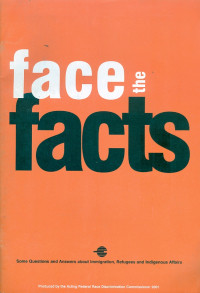
Text
Face the facts
• In 2011, almost 670 000 Aboriginal and Torres Strait Islander people were living in Australia;1 around three per cent of the Australian population. By 2031, it is estimated that this number will exceed one million, with Aboriginal and Torres Strait Islander people comprising 3.9 per cent of the opulation.2
• One third (34.8 per cent) of Aboriginal and Torres Strait Islander people live in major cities;3 43.8 per cent live in regional areas; 7.7 per cent live in remote areas; and 13.7 per cent live in very remote areas
• In 2008, half of all Aboriginal and Torres Strait Islander people aged 15 years and over had some form of disability.11 In non-remote areas, Aboriginal and Torres Strait Islander people were one-and-a-half times more likely than non-Indigenous adults to have a disability or a long-term health condition.12
• Around one in twelve Aboriginal and Torres Strait Islander adults are part of the Stolen Generations. In 2008, eight per cent (26,900) of Aboriginal and Torres Strait Islander people aged 15 years and over stated that they had been removed from their natural family. Thirty five per cent assessed their health as fair or poor and 39 per cent experienced high or very high levels of psychological distress.13
• The national imprisonment rate for Aboriginal and Torres Strait Islander adults is 15 times higher than that for non-Indigenous adults.14 In the December quarter of 2013, Aboriginal and Torres Strait Islander people comprised 27 per cent of Australia’s full-time adult prison population.15
• There were approximately 250 Australian Indigenous languages spoken at the time of colonisation. However, a 2005 survey found that only 145 Indigenous languages are still spoken to some degree and less than 20 are considered to be “strong” and able to be spoken by all generations
Availability
| KP.X.000060 | KP.X INT f | My Library | Available |
Detail Information
- Series Title
-
-
- Call Number
-
KP X.INT f
- Publisher
- Sydney : Human Rights and Equal Opportunity Commission., 2001
- Collation
-
36 hlm. : ilus. ; 30 cm.
- Language
-
English
- ISBN/ISSN
-
-
- Classification
-
KP X
- Content Type
-
-
- Media Type
-
-
- Carrier Type
-
-
- Edition
-
-
- Subject(s)
- Specific Detail Info
-
-
- Statement of Responsibility
-
-
Other version/related
No other version available
File Attachment
Comments
You must be logged in to post a comment
 Computer Science, Information & General Works
Computer Science, Information & General Works  Philosophy & Psychology
Philosophy & Psychology  Religion
Religion  Social Sciences
Social Sciences  Language
Language  Pure Science
Pure Science  Applied Sciences
Applied Sciences  Art & Recreation
Art & Recreation  Literature
Literature  History & Geography
History & Geography